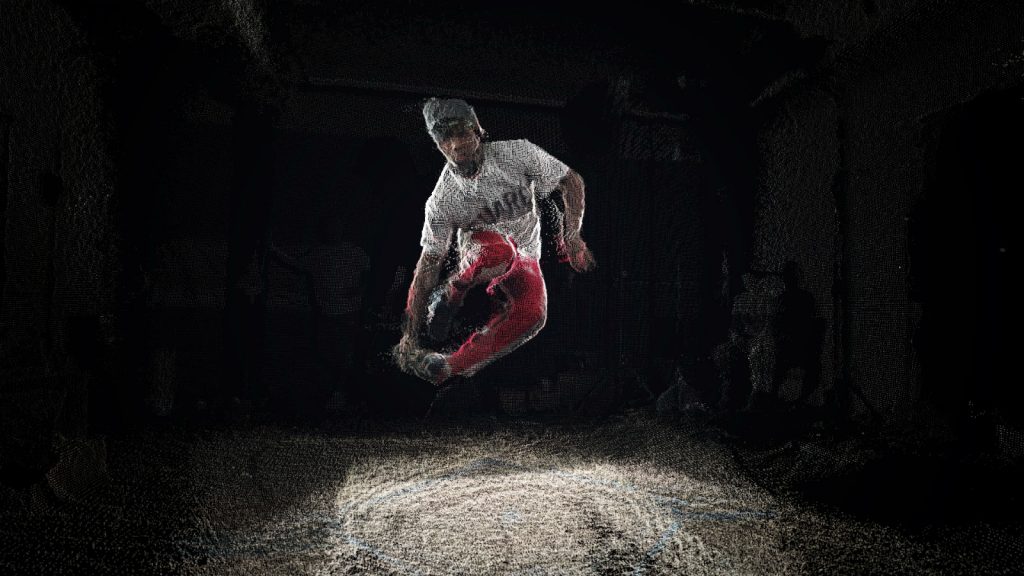Tribeca Film Festival 2017: Highlights
Embracing, excelling beyond and avoiding traditional cinema at this year’s event

In its 16th year, NYC’s Tribeca Film Festival now comprises thousands of screenings, multiple venues, cross-disciplinary works and so much more to be excited about—whether or not cinema is your primary passion. What began as an attempt to revitalize the TriBeCa neighborhood post-9/11 has expanded into one of the city’s most important creative endeavors. Founders Jane Rosenthal and Robert De Niro have built a platform that brings the world’s most established talent into reach, all while pushing forward the exposure of emerging makers. This year’s festival, running 19-30 April, saw new territory covered as well as a slate of groundbreaking films. A few elements stood out—including an announcement from festival affiliate Tribeca Film Institute. And while the programs are almost all wrapped this time around, our highlights can be a nudge toward further research or even planning next time around.

Tribeca Immersive’s Virtual Arcade
After years attending Sundance’s New Frontier, we finally found a worthy counterpart in NYC. The entire immersive division of the Tribeca Film Festival offered much to think about but the Storyscapes section at the Virtual Reality Arcade truly stunned with advancements in VR storytelling. As for the Arcade itself, 30 VR projects and interactive projects were presented (20 of which were world premieres). Storyscapes included six projects. Our personal favorite, Scatter’s Blackout, ran within a subway-car-like installation. The VR experience placed viewers into the POVs (complete with inner-monologues) of New Yorkers in transit. Another standout brought back a name quite familiar to CH: Gabo Arora. The filmmaker partnered with Ari Palitz and Hamilton set designer David Korins on The Last Goodbye, documenting the return of Holocaust survivor Pinchas Gutter to Majdanek Concentration Camp. Understandably, it brought a resounding emotional power to the medium.

Tribeca Talks
Each year, the film festival’s Tribeca Talks programming delivers an opportunity to hear masterminds address their own work. A Directors Series and Storyteller series further divided the topics, and a Master Class series offers focused conversation on other dedicated parts of filmmaking. This year saw the likes of Common, Jon Favreau, Alejandro González Iñárritu, Barbra Streisand and more take the stage. For the first time ever, however, Tribeca Talks premiered a VR film and the accompanying dialogue took most by surprise. “The Protectors,” directed by two-time Academy Award-winner Kathryn Bigelow and Imraan Ismail, documents rangers attempting to protect elephants from poachers in Africa’s Garamba National Park. The immersive, exquisite experience was followed up by a dialogue between Bigelow, Ismail, a representative from National Geographic (who produced it) and—as a surprise—former Secretary of State Hillary Clinton. This was a prime (and moving) example of what can be expected from Tribeca these days.

Opening Night of the Tribeca Film Festival
While “Opening Night” might sound nebulous, there’s no opening night quite like that of the Tribeca Film Festival. The only event that doesn’t take place in its namesake neighborhood, the debut screening (which anyone can buy tickets for) takes place at Radio City Music Hall—and the past few years have been music-focused and powerful. This year, “Clive Davis: The Soundtrack of Our Lives” made its world premiere. Directly after the screening, many of its subjects—from Aretha Franklin to Dionne Warwick and Barry Manilow—took to the stage for a performance. While the film, documenting the music industry icon’s five-decade career, truly captivated, it was but another great installment in the opening night festivities of a festival that cares about its attendees.

Tribeca Film Institute’s All Access Grant
Tribeca Film Festival affiliate Tribeca Film Institute (TFI) once again used this week to announce recipients of their 14th annual Tribeca All Access (TAA) program. The program provides select filmmakers (who hail from underserved communities) with grant money, guidance and industry support. This year’s 10 include both scripted and documentary projects, and substantial emerging talent. While glitzier happenings may get more attention, TAA’s work is lending resource to those who need it most—and since its inception back in 2004, 278 projects have received assistance. TAA plans to continue their support with post-production and marketing efforts so that the films get the viewers and attention they so deserve.
The Protectors image courtesy of National Geographic, Clive Davis image from “Clive Davis: The Soundtrack of Our Lives,” Tribeca All Access “The Youth” image courtesy of Arthur Nazaryan and The Last Goodbye image courtesy of Tribeca Film Festival












